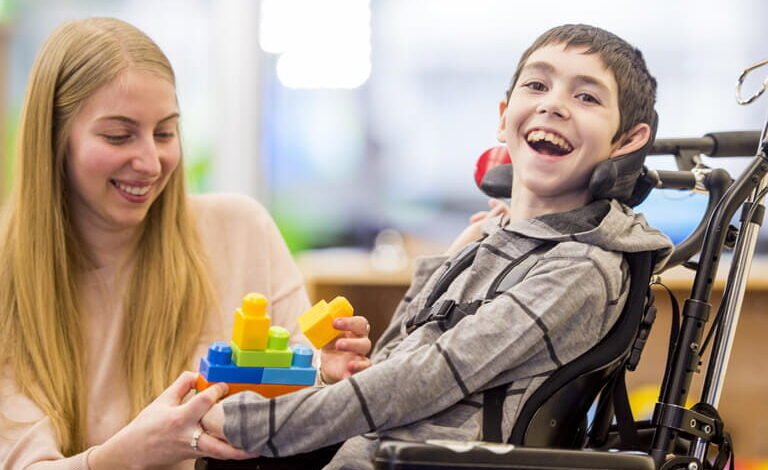Ohio Leads the Way in Inclusive Child Care for Children with Disabilities

For many families in Ohio, finding quality child care is difficult. But for families raising children with disabilities or complex medical needs, it can feel nearly impossible. A 2024 federal report found that more than one in four parents of children with disabilities struggle to access appropriate care, with many turned away or excluded from basic activities like field trips or academic instruction. But in Ohio, a growing movement is changing that reality.
From state-funded training programs to new legislative proposals, Ohio is taking bold steps to ensure that all children, including those with developmental delays, autism, Down syndrome, and medical fragility to have a place in early learning environments. These efforts are not only transforming care for thousands of families but also offering a national model of what inclusion can look like in practice.
From Exclusion to Inclusion: One Center’s Journey
When Selina Likely became director of the Edwards Creative Learning Center six years ago, she faced a difficult truth: her center, like many others, had long excluded children with disabilities. It was written into policy. But Likely, a mother whose own child has autism, believed change was possible.
“I said, ‘Let’s start getting training and see what we can do,’” she recalled. That training came through Ohio PROMISE, a statewide initiative designed to build the confidence and skills of child care staff to include children with disabilities.
What Is Ohio PROMISE?
Launched after a 2022 call to action from Governor Mike DeWine, Ohio PROMISE is a free, tiered training program that equips early childhood educators with the tools to create inclusive classrooms. It covers practical topics like:
-
How to adapt classroom environments
-
How to support communication for nonverbal children
-
The benefits of mixed-ability learning and play
Educators also receive mentoring from experienced coaches and access to regional support staff. In its first year, more than 1,000 child care centers across the state earned a special designation for completing at least part of the training.
For many centers, the results have been immediate. At Edwards, teachers now use picture boards for communication, fidget toys for sensory support, and quiet corners for children who need calming spaces. Some children without disabilities are even learning sign language alongside their peers.
“Inclusion has been good for everyone,” said Meagan Severance, a staff member whose own son, once expelled from another center for biting, now thrives in the inclusive environment she helps to lead.
A Wider Impact
The effects of Ohio PROMISE are being felt statewide. The number of children with disabilities in publicly funded centers has increased by 38%. And the state is incentivizing this growth by offering higher reimbursement rates for children with disabilities, helping centers cover the cost of additional support staff or equipment.
Wendy Grove, a senior adviser in the Ohio Department of Children and Youth, helped design the program. “There’s no reason the developmental gap between children with and without disabilities should be this wide,” she said, pointing to the state’s readiness scores for kindergarten. “We believe better inclusion in early years can help close that gap.”
Addressing Medical Complexity
Ohio is also exploring how to meet the needs of medically fragile children, many of whom are unable to attend traditional child care programs. House Bill 141, passed unanimously in the House, would allow for the licensing of Prescribed Pediatric Extended Care (PPEC) centers in the state.
These centers, already operating in nearby states like Kentucky, are designed specifically for children with complex health conditions. Staffed by nurses and therapists, they offer both education and medical care under one roof, freeing up parents to return to work and giving children the chance to socialize and grow in a supportive environment.
“These centers change lives,” said Rep. Cindy Abrams, a co-sponsor of the bill. “They give families stability, and they give children a chance to just be children.”
Challenges Remain
Despite strong local momentum, Ohio’s inclusive child care movement faces broader structural challenges. While federal policies require states to expand child care access for children with disabilities, many, including Ohio have received waivers to delay implementation. And proposed federal budget cuts to Medicaid threaten the funding stream that supports many early intervention services.
Still, state and community leaders remain committed. Programs like Ohio PROMISE are proving that meaningful inclusion is not only possible, it’s cost-effective and transformative. Teachers are gaining new skills, parents are finding peace of mind, and children are flourishing in environments where their needs are understood and supported.
Conclusion
Ohio’s approach to inclusive child care is rooted in a simple yet powerful belief: every child deserves to belong. Through training, legislation, and increased funding, the state is building a system where families of children with disabilities are no longer turned away, but welcomed.
As other states look to improve early childhood education, Ohio’s work offers a compelling example of what it means to lead with empathy, evidence, and action.
